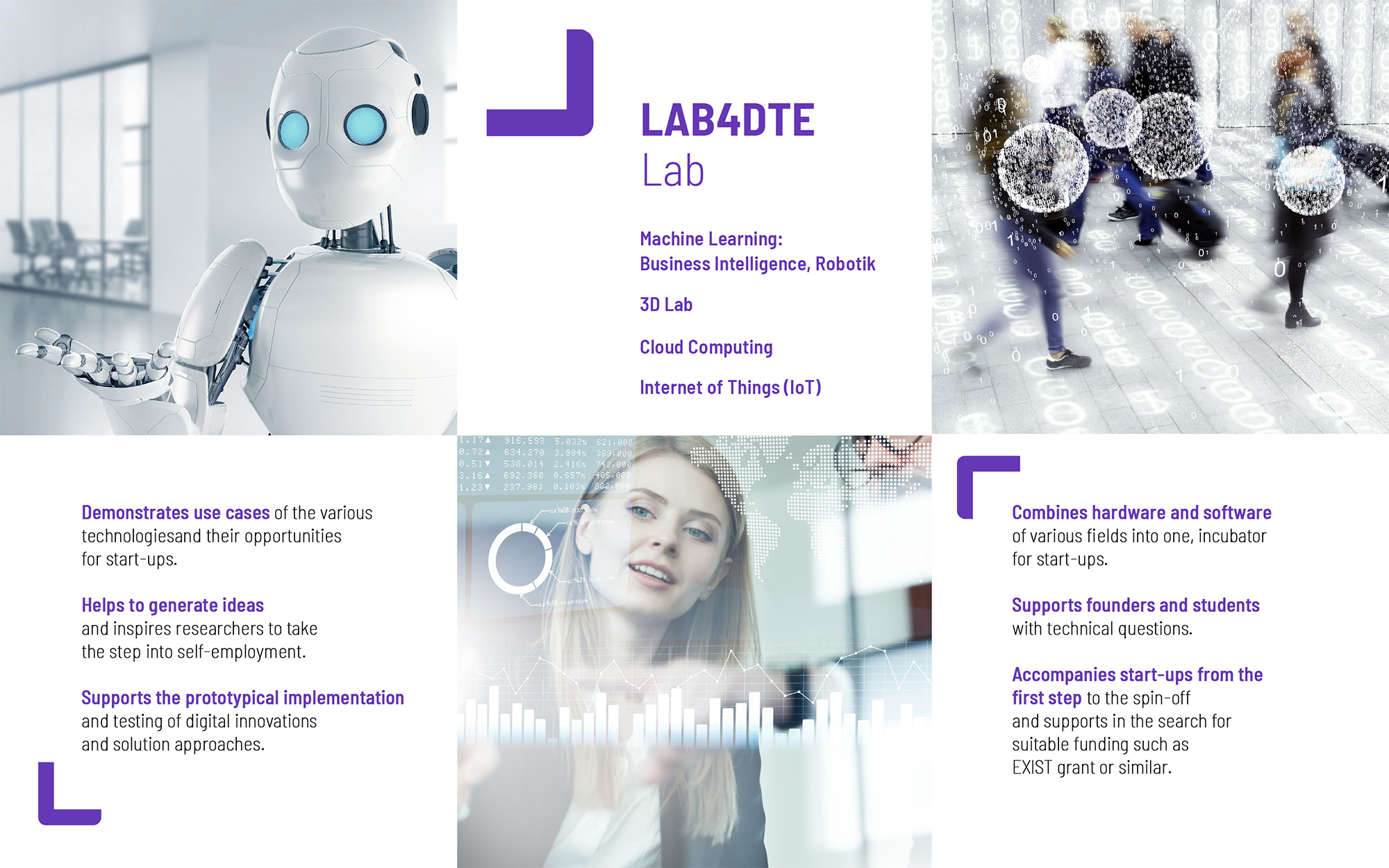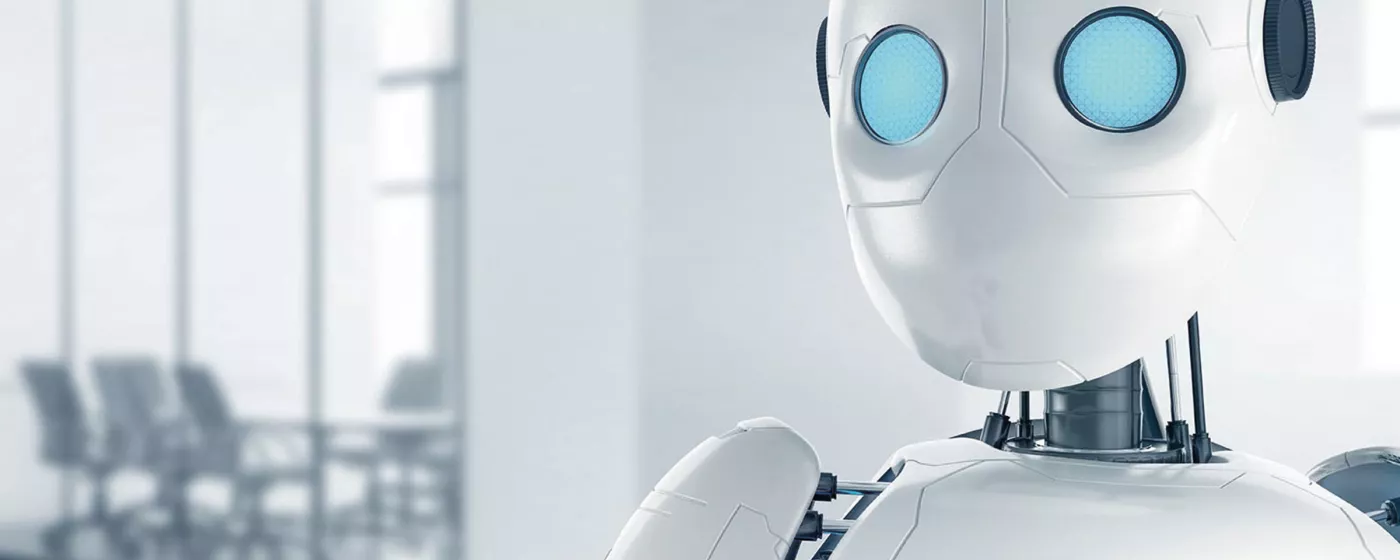Profile
LAB4DTE Innovation Lab
The LAB4DTE innovation lab supports the prototypical implementation and testing of digital innovations and solutions in the areas of Business Intelligence & Machine Learning, Internet of Things & Mobile Services, 3D Sensors, Cloud Computing & Distributed Architectures, as well as Automation & Robotics. The basic approach is to provide suitable hardware and software frameworks that allow prototypical implementation and demonstration of innovative solutions and product ideas. For this purpose, the LAB4DTE builds on already existing hardware and software equipment of the RWU and extends and supplements it in order to achieve the greatest possible degree of flexibility and coverage of different solution approaches and techniques.

The LAB in 3D
Press, TV and radio
THE Lab4DTE on TV and radio
The opening of the LAB4DTE innovation lab was a complete success.
Numerous showcases from the fields of 3D sensor technology, business intelligence, Internet of Things and robotics & AI are presented in the LAB4DTE innovation lab.
Visitors were impressed and fascinated by the pioneering equipment. There are many opportunities for future start-ups to try out ideas and bring them to market maturity.
The radio and Regio TV also reported on the event:
Radio interview with the head of LAB4DTE Prof Dr Wolfram Höpkem
TV report from Regio TV on the opening of the LAB4DTE innovation lab
Here is an article in the Schwäbische Zeitung about our opening:
Article in the Schwäbische Zeitung on the opening of the LAB4DTE innovation lab
Contact & People
General contact details
| lab4dte@rwu.de | |
| On campus |
Gebäude E
Leibnizstr. 15
88250 Weingarten |
| Postal address |
RWU Hochschule Ravensburg-Weingarten University of Applied Sciences LAB4DTE Innovation Lab Postfach 30 22
D 88216 Weingarten |






